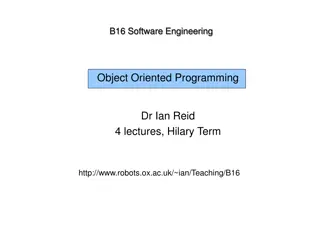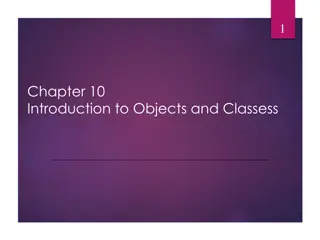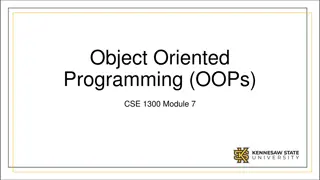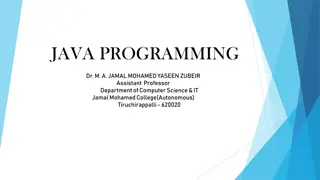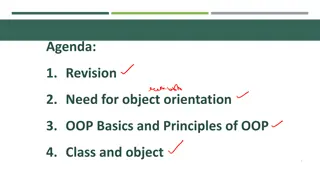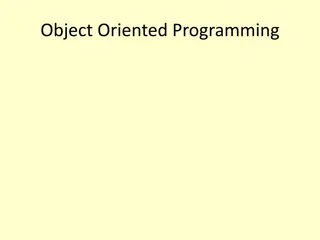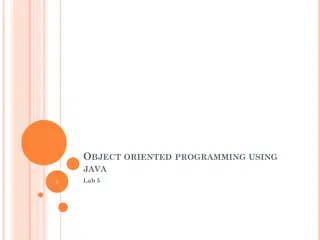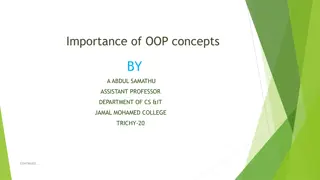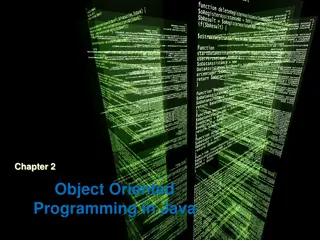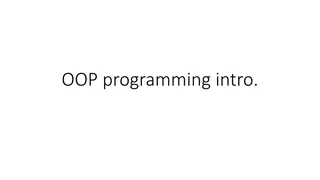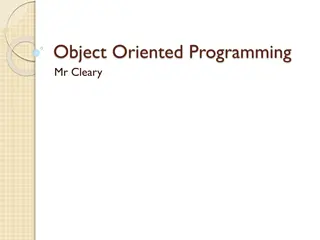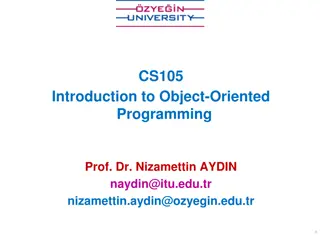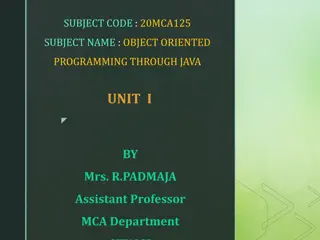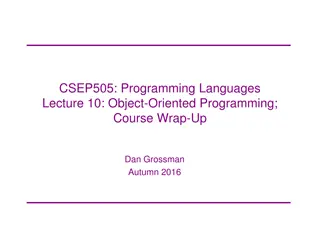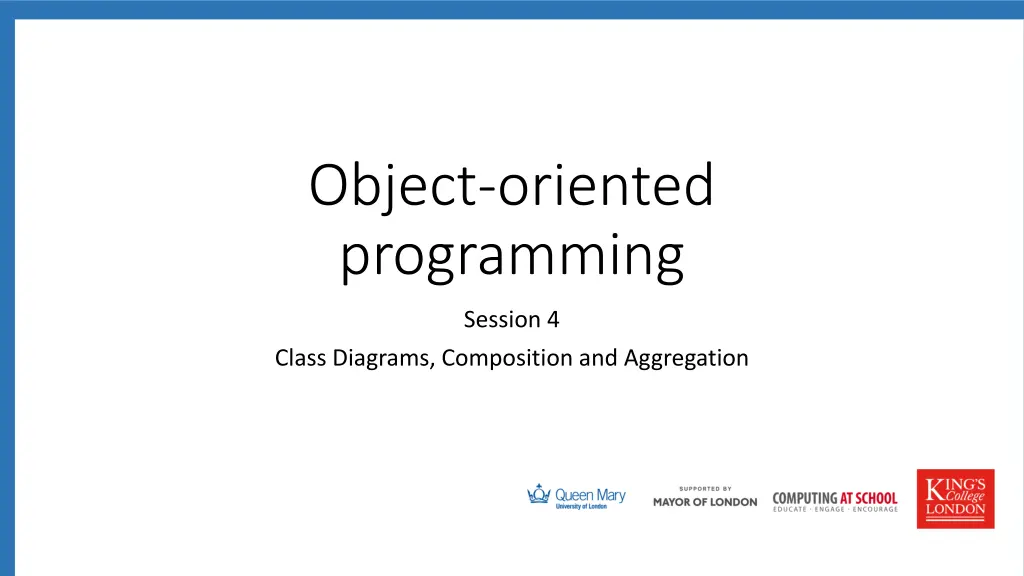
Understanding Object-Oriented Programming Principles and Class Diagrams
Explore object-oriented programming concepts like class diagrams, composition, aggregation, and inheritance. Understand the difference between private, public, and protected attributes in classes. Learn about encapsulation and enhancing programming skills with Python modules.
Download Presentation

Please find below an Image/Link to download the presentation.
The content on the website is provided AS IS for your information and personal use only. It may not be sold, licensed, or shared on other websites without obtaining consent from the author. If you encounter any issues during the download, it is possible that the publisher has removed the file from their server.
You are allowed to download the files provided on this website for personal or commercial use, subject to the condition that they are used lawfully. All files are the property of their respective owners.
The content on the website is provided AS IS for your information and personal use only. It may not be sold, licensed, or shared on other websites without obtaining consent from the author.
E N D
Presentation Transcript
Object-oriented programming Session 4 Class Diagrams, Composition and Aggregation
Course Outline Week No Understanding Developing programming skills Week-1 Week 1 Introduction to Classes and Objects Week 1 OOP Programming basics Week-2 Week 2 Variables and objects, Python Modules Week 2- Creating and using Python modules Week-3 Week 3 Inheritance Week 3 Programming using Inheritance Week-4 Week 4 Class Diagrams Week 4 Composition and Aggregation Week-5 Week 5 - Polymorphism Week 5 - Consolidation
Session 4 Outline To be able to read and draw class diagrams To understand the difference between private, public and protected attributes To be able to implement a has-a relationship (aggregation/ composition) To understand the encapsulation principle To consolidate understanding of inheritance
Specification check From AQA ( plus other details ) From CIE From OCR
Recap: Inheritance One class can inherit methods and variables from another class This is called inheritance For example, in a system for a school, there may be a Student class and a Staff class (enabling you to create Student and Staff objects) There also may be TeachingStaff, SupportStaff, ManagementStaff classes. These could inherit methods and variables from the Staff object. In this case Staff is the super class and TeachingStaff is the sub class (or child class)
Private, public & protected Theoretically, the parts of a class declaration are declared to be private OR public a private section for the state (member data ie attributes) a public section for the behaviour(operations, member functions) The keywords private and public control the accessibility of the member data and functions Private or protected attributes cannot be accessed outside of the class Public methods can be accessed outside the class Private and public are not implemented in Python but are needed for examination answers
Encapsulation This is an important principle of OOP, associated with abstraction or information hiding Encapsulation means that the internal representation of an object cannot be seen from outside of the object s definition It is achieved by making attributes private (or protected). The attributes are only accessed through methods (public) Get and set methods are written to access the data This protects the object from being changed in an irregular way and allows groups of developers to all access the same class, via the methods.
Class Diagrams class name attributes methods - private + public
Composition and aggregation contd Composition is where one object is composed (or made up of) two or more existing objects and is entirely dependent on those objects for its own existence (from Hodder AQA materials) Association aggregation is where an object is made up of one or more objects but is not entirely dependent on those objects for its own existence (from Hodder s AQA materials) For example, a teaching group is made up of students: this is aggregation as the students will belong to other teaching groups too. A teaching group also has to have a teacher. This can be argued to be the stronger case of composition.
Composition & Aggregation (association) Composition and aggregation are both has-a relationships that can be hard to distinguish. The strongest relationship is composition, then aggregation and then association. AQA talk about all three in their resources but the spec mentions composition aggregation and association aggregation.
Activity 1 Edit the class diagram to include a Teaching group add the attributes name, room number and subject and student_list and two methods to a) add a student to the teaching group and b) return the room number, name and subject of the teaching group Composition aggregation (for AQA examinations) Association aggregation (for AQA examinations)
Possible answer Gliffy can be used to create Class Diagrams (14 day free trial) or just do them in powerpoint
Difference between Python & pseudocode Python Pseudocode (exam questions) class Pet private name public procedure new(givenName) name=givenName endprocedure endclass class Dog inherits Pet private breed public procedure new(givenName, givenBreed) super.new(givenName) breed=givenBreed endprocedure endclass Note that Python does not mention private and public This is OCR pseudocode but they are all similar
Activity: Past paper question Answer examination question June 2015 AQA Comp 3 See handout - Draw an inheritance diagram - Write a class definition in pseudocode

